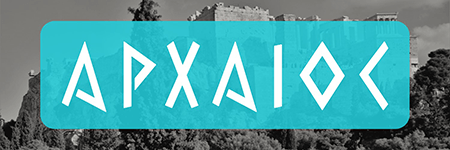The trial of Jesus before Pilate is recorded in each of the Gospels (Luke 23, Matthew 27, Mark 15, John 19). However, only the Gospel of John records specific geographic details about the event: “Therefore when Pilate heard this statement, he was even more afraid; and he entered into the Praetorium again and said to Jesus, “Where are You from?” But Jesus gave him no answer. So Pilate said to Him, “You do not speak to me? Do You not know that I have authority to release You, and I have authority to crucify You?” Jesus answered, ‘You would have no authority over Me, unless it had been given you from above; for this reason he who delivered Me to you has the greater sin.’ As a result of this Pilate made efforts to release Him, but the Jews cried out saying, ‘If you release this Man, you are no friend of Caesar; everyone who makes himself out to be a king opposes Caesar.’ Therefore when Pilate heard these words, he brought Jesus out, and sat down on the judgment seat at a place called The Pavement, but in Hebrew, Gabbatha” (John 19:8–13, NASB). Two important early historians from the first and second centuries also mention the trial of Jesus being presided over by Pontius Pilate. “Pilate condemned him to be crucified and to die” (Josephus, Antiquities 18:63). “…Christians, who were hated for their enormities. Christus, the founder of the name, was put to death by Pontius Pilate, procurator of Judea in the reign of Tiberius” (Tacitus, Annals 15:44).
We know that this trial occurred in Jerusalem, but John specifically mentions the Praetorium, the judgment seat, the Pavement, and Gabbatha. The Praetorium was the residence of the Roman prefect of Judea Province, who at this time was Pontius Pilate. Luke mentions Pilate as ruler of Judea in the fifteenth year of the reign of Tiberius (Luke 3:1), which would be approximately 28 AD. Pilate is known to have ruled as Prefect of Judea from about 26-36 AD (Josephus, Antiquities, Wars; Philo, Legatio ad Gaium; Tacitus, Annals; the Gospels; the Pilate Stone). This governor’s residence is believed to be the former palace of Herod the Great, on the western side of the current Old City of Jerusalem (Gibson, The Final Days of Jesus; Philo, Legatio ad Gaium; Josephus, Wars). Some of this area has been excavated, but most was probably destroyed in later periods. The judgment seat, or “bema,” is also mentioned. The “bema” was a raised platform, and in its basic sense means “step,” although it is often translated as “judgment seat” in the New Testament. A more precise translation is tribunal or judicial bench. It originated in Greece, used by both orators and law courts, but it was later adopted around the Roman world. The bema is mentioned multiple times in the New Testament (cf. Acts 12:21, 18:12, 25:6), and the bema mentioned in Acts 18 in connection with Paul and Gallio in Corinth was discovered in archaeological excavations long ago. The bema at the Praetorium in Jerusalem has also been discovered, and can be seen on the outside of the city wall in Jerusalem. The Pavement, or “lithostrotos” is a place paved with blocks of stone. Part of the “lithostrotos” at the Praetorium in Jerusalem is still preserved and can be seen today, after being covered by dirt and debris for centuries. An additional name that John uses, Gabbatha, was the Hebrew name for the place. One scholar connects Gabbatha to a Latin loan word (gabata), meaning “platter,” because of a resemblance to the area of the stone pavement (Torrey, ZAW 65). One other structure in the immediate area that is not mentioned by John, but is mentioned by Josephus, is called the Gate of the Essenes (Josephus, Wars; Gibson, The Final Days of Jesus). This structure was also uncovered in archaeological excavations during the 1970s, and the ruins can be viewed and visited today. Thus, we have both specific archaeological and textual confirmation of the trial of Jesus before Pilate in the Praetorium as recorded in the Gospel of John.
